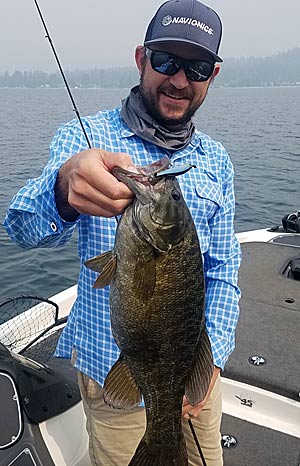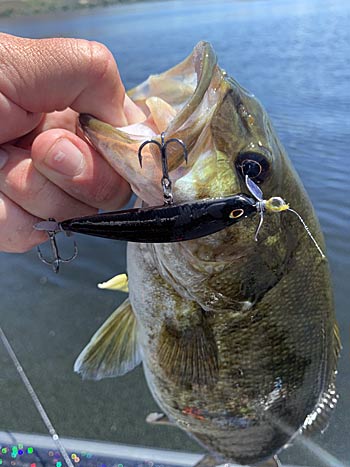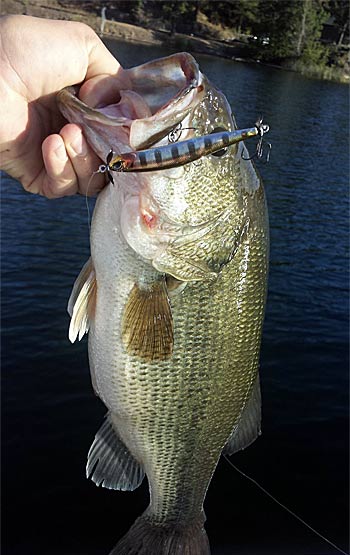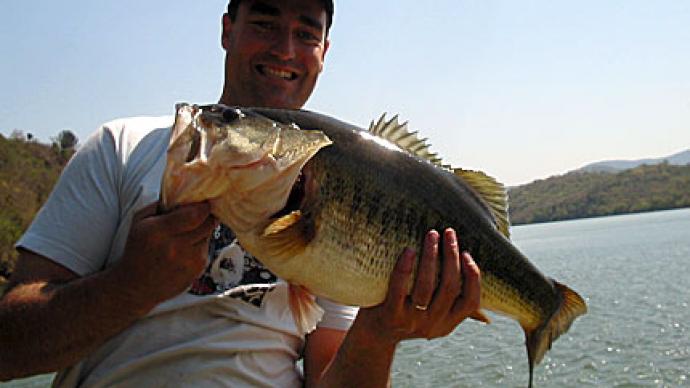
Over the past few years, a technique called spybaiting has entered the bass fishing world. It is a Japanese import and includes a small minnow-shaped hard bait, called a spybait, that features twin props on both ends of the lure.
The technique excels in clear water with a straight retrieve through the water column and is responsible for some impressive catches for both weekend anglers and top professional bass anglers.
Here is all you need to know about fishing a spybait.
When to Spybait
The use of a spybait is like all techniques and depends on the conditions. A spybait is a lure that excels when fish are suspended and unwilling to chase more aggressive lure types. Another critical component is clear water, as the technique is highly visual. A bass tends to track the lure for long distances before striking or seeing it moving above them in deeper water.
Fishing a Spybait
The technique of spybaiting has been dubbed the technique of "silent capture," It helps to describe the lure that is unlike most of what we do in bass fishing. Most bass fishing techniques involve lures that rattle, flash, and vibrate; the spybait does very little. They are generally non-rattling baits that swim through the water column, and although they have small propeller blades, they do not add much flash or vibration.
Another critical difference between a spybait and other lures is how they are fished. Most bass fishing lures depend on the angler working the lure by either twitching, jerking, cranking, or imparting action to get the bait to move. The spybait doesn't need anything added besides a simple retrieve. They are designed to be cast and retrieved without any rod movement.

The lure swims through the water like a small baitfish, oblivious to what is happening around them. It is opposite to what most bass anglers consider normal and generally forces fishermen to slow down and reel the bait back. It takes some time to learn the right retrieve speed and gain confidence in the non-action of these lures, but they work wonders when the conditions are right.
One of the keys to understanding the bait is developing a sense of how deep the lure is at all times, and that can be done with simple trial-and-error to figure out how fast a lure falls per second. This is called the rate of fall and is generally about a foot per second. Once that is determined, a simple count will tell you where your bait is in the water column.
Gauging where you want your bait to come down to experimentation and taking mental notes of where you are getting bites, but watching your electronics to see what depth bass and baitfish are is another piece of the puzzle.
Generally, retrieving the bait above the fish is the best practice, as the bass will rise to eat the lure, but it can also be closer to the bottom if the bass are positioned there.
Choosing Your Spybait
As the technique has become more prevalent in North America, lure manufacturers have taken notice, and several of the biggest brands in fishing now have a version of the bait. Most baits are less than four inches long and weigh around 3/8-ounce. They are fast-sinking baits and can be fished as deep as you like.
Duo Realis is the company that helped bring the trend to the mainstream, and its version is still the most widely used. The Duo Realis Spinbait comes in several different versions and is still the most popular among spybaiters, with the original Spinbait Series and G-Fix Spinbait 80 being among the most popular.

Berkley's bait, The Spy, was developed by pro angler Josh Bertrand and includes both a fast-sinking and slow-sinking version. The slow sinking version is an example of the technique's evolution and a way to fish shallower water effectively with the method.
Spybait Gear
Since most spy baits are small and lightweight, spinning gear and light lines are the standards for fishing and casting. The light line aids in making long-distance casting and helps to get the most out of the lures under the surface as heavier line hinders their movements and rate of fall.
An ideal spy bait setup is similar to drop-shot gear. A 7' medium-light rod with a 2500-sized spinning reel is a good setup when paired with either a 6-pound fluorocarbon line or a lightweight braid with a fluorocarbon leader. A good option for a braided line is 15-pound Flash Green Seaguar Smackdown braid paired with a leader of 8-pound Seaguar Gold Label fluorocarbon.
Some of the larger spybaits can be fished on baitcasting gear, and the same rules apply to how they are fished. Most anglers using bigger spybaits use equipment similar to jerkbait fishing with limber rods and eight or ten-pound fluorocarbon line.
Spybait Species and Color Selection
The spybaiting technique has garnered the most attention in clear water smallmouth situations such as the Great Lakes region. Still, it is equally useful for all bass species across the country.
Most of the colors available for spybaits are similar to jerkbaits, with a host of translucent and natural baitfish shades. The general rule of thumb is to closely match the forage base of your local waters. Another good practice is to select translucent colors in ultra-clear water and more solid colors during overcast conditions.
Fishing a spybait requires anglers to forget the norm of working lures aggressively and become more in tune with the lure during the retrieve. It is a technique that can catch bass in challenging conditions, such as when faced with sunny skies and suspended bass, two situations that often prove difficult to fishermen. The spybait excels when nothing else seems to be working.
BassResource may receive a portion of revenues if you make a purchase using a link above.




